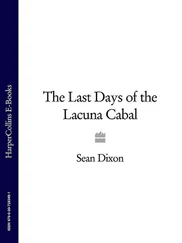Despite such symbol-laden spectacle, it was in private that the empress’s maternal instincts were finally allowed to blossom at the age of forty-eight. ‘The infant instinctively likes me,’ she boasted to Grimm, and indeed to anyone else who would listen. Gustav III, whose heir had been born not long before, was a natural target for her ideas about child rearing and soon received a detailed description of Alexander’s nursery, evidently designed to provide the cool, natural environment denied to her own son in 1754:
The balustrade prevents too many people from approaching the child at once. Care is taken to ensure that only a few of his entourage are allowed in the room at the same time, and only a couple of candles are lit in the evening so that the air around him doesn’t get stuffy. Monsieur Alexander’s bed, for he knows neither rocker nor cradle, is made of iron and has no curtains; he sleeps on a leather-covered mattress covered with a sheet. He has a pillow and his English bedspread is very light. He is not roused by ear-splitting alarms, but by the same token neither are voices lowered in his room, even when he is asleep. No sort of noise is prohibited in the corridors above and below his room. Cannon are fired from the bastions of the Admiralty, opposite his window, which has made him afraid of nothing [legend had it that this was the cause of his subsequent deafness]. Great care has been taken to ensure that the thermometers in his room do not rise above fourteen or fifteen degrees. Every morning, while his room is swept, whether it be winter or summer, he is taken to another apartment while his own windows are opened to let in fresh air. 35
A second grandson, Constantine, born eighteen months later, was similarly taken over, though he could never compare with Alexander in Catherine’s eyes. Dr Dimsdale was re-called to Russia to inoculate both boys at seven o’clock on the evening of 27 August 1781. She was surprised that Gustav should be so reluctant to offer his own son the same treatment: ‘If you yourself were in any danger, then it was assuredly the fault of the method by which you were inoculated.’ The king should send a doctor to St Petersburg to learn Dimsdale’s method, ‘without contradiction, the best’. 36
As Catherine later explained to Paul and Maria Fëdorovna, ‘your children belong to you, to me, and to the state. From their earliest childhood I have made it a duty and a pleasure to take the most tender care of them.’ 37She aimed to nurture not only healthy boys, but also rational children of the Enlightenment. While tears were forbidden, as a sign of stubbornness or undue sensitivity, inquisitiveness was encouraged. 38By the time of his fourth birthday, Alexander was already said to be ‘a determined questioner’, just like his grandmother. 39He could point out Vienna, Kiev and St Petersburg on the globe and willingly devoted two or three hours a day to his ABC. ‘If he continues like this,’ Catherine boasted to his mother, ‘there is no doubt that he will be reading by the spring.’ 40Anticipating the need, she had prepared her own Russian primer to teach young people to read , a series of maxims written ‘even while legislating’ in the spring of 1780. 41‘No child is born learned,’ the empress declared at the outset: ‘the parent’s duty is to give learning to the child.’ Then she moved on to a series of moral injunctions based on her own brand of secularised Protestantism—‘the law requires a man to love his neighbour as himself’; ‘do as you would be done by’—before concluding with a definition of citizenship highlighting her favourite virtues: obedience and exactitude. ‘Question: what is a good citizen? Answer: A good citizen is he who fulfils precisely all the duties of a citizen.’ 42
Such ideas were soon to be given wider application in the empire thanks to the efforts of an advisory commission on education, set up in 1782 under the aegis of Paul’s old science tutor, Professor Aepinus. It was partly on his advice that Catherine adopted the Austrian model of village, urban and provincial schools, using a teaching system initially introduced in Prussian Silesia by the Augustinian abbot Johann Ignaz von Felbiger. Though Felbiger’s emphasis on rote learning was a far cry from the permissive methods advocated by Betskoy in the 1760s, it seemed better suited to the needs of a diverse multinational empire. F. I. Jankovich de Mirjevo, who had been responsible for introducing the Habsburg reforms to the predominantly Orthodox population of his native Serbia, arrived in St Petersburg on 4 September 1782. Three days later Zavadovsky was appointed to head a new Commission of National Schools. In the following year, the empress sponsored the publication of The Book On the Duties of a Man and Citizen , a textbook based on a work by Felbiger which emphasised society’s duty to obey an appropriately enlightened monarch. Pupils were to be taught to believe that ‘those who give orders know what is useful to the state, their subjects and all civil society in general, that they do not wish for anything but that which is generally recognised as useful to society’. 43
Not until August 1786 was a statute promulgated to put these maxims into action in schools at provincial and district level (rural schools, mentioned in earlier drafts were dropped from the final legislation). Meanwhile, although the Russian primer was also intended for a wider readership—Catherine improbably claimed that the published version sold 20,000 copies in barely a fortnight—she had eyes only for Alexander, whose progress continued to delight her. By January 1782, she claimed that he could divide the map of Russia into provinces and count to a thousand, ‘beginning with two times two’. 44A month later, she revealed that she was compiling a suitable reader for a child who ‘seizes every [book] he finds’. 45Catherine’s Tale of Tsarevich Khlor was the first children’s story to be written in the Russian language. Sure enough, these ‘dozen tales, wise and not so wise’ were soon judged to have had ‘an excellent effect: he reads and re-reads them and follows them afterwards; he is polite, obedient, and jolly, like Constantine; this one imitates his brother and has a very pleasant personality’. 46
Whether the grand dukes were really the paragons that their proud grandmother described, we cannot tell. Yet there is no doubt about the purpose of their education. While Alexander was being groomed to inherit the Russian throne, Constantine (as his name proclaimed) was destined for Constantinople. That was why Catherine’s Russian primer incorporated a section on the Greek alphabet and why Richard Brompton’s saccharine portrait of the two boys, completed in July 1781, depicts Alexander cutting the Gordian knot on the altar of Zeus while Constantine holds a flag topped with a victory cross (‘With this sign you will conquer’). 47Potëmkin, who had celebrated Constantine’s birth with a stylised Greek festival at his country estate at Ozerki, wanted both boys to concentrate on Greek as the foundation of all other languages: ‘One can scarcely credit what learning and delicacy of style it has given to so many writers who are distorted in translation, not so much by the translators as by the weakness of other languages.’ 48
Reporting Potëmkin’s obsession ‘with the idea of raising an Empire in the east’, Harris noted that ‘he has so far infected the Empress with these sentiments, that she has been chimerical enough to christen the new born Grand Duke, Constantine; to give him a Greek nurse, whose name was Helen, and to talk in her private society, of placing him on the throne of the Eastern Empire. In the meanwhile, she is building a town at Czarsco Zelo, to be called Constantingorod.’ 49The new town was in fact named, no less emblematically, Sofia, with a cathedral resembling Hagia Sophia visible across the great pond in an echo of the Bosphorus. 50Though Catherine denied any expansionist ambitions, she spoke at length to Harris ‘on the ancient Greeks, of their alacrity and the superiority of their genius, and the same character being still extant in the modern ones, and of the possibility of their again becoming the first people, if properly assisted and seconded. She told me she talked this language to me as she knew my father was an admirer of the Greeks, and that she hoped I inherited his predilection.’ 51James Harris senior, who had presented Catherine with a copy of his celebrated universal grammar, Hermes (1751), was indeed delighted. When his daughter-in-law sent him the Greek chorus, sung at Peterhof at the end of June 1779 to celebrate Constantine’s birth, he spent the next two years badgering his son for a copy of the score by Paisiello, one of his favourite composers. 52
Читать дальше












